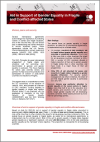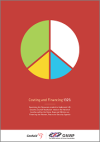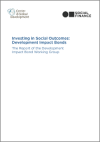FOUND 21
This paper by the Commonwealth Secretariat (1999) provides a rationale for the strategic goals of the Commonwealth Gender Budget Initiative at the national level and highlights the need for integrating a gender perspective in macroeconomic policies and budgets.
The present study is a contribution to mark the 10th anniversary of the adoption of UNSCR 1325, and provides an overview of DAC members' funding targeted to gender equality in fragile and conflict-affected states.
This publication intended for those who wish to better understand the links between gender equality, public policy formation and development financing.
Budgeting for Equity: Gender Budget Initiatives Within a Framework of Performance Oriented Budgeting
The publication discusses the tools needed to determine how a government budget impacts the different sexes. The publication achieves three objectives. First, the background of gender responsive budgets is described for readers who are not as familiar with the initiative.
The report, authored by Professor Diane Elson, a leading feminist economist, makes a significant contribution to the advocacy work on the transparency of budgets. It provides arguments for increasing the accountability of government budgets to women's rights.
A summary guide for policy makers, gender equality and human rights advocates" is a publication based on a report by Diane Elson "Budgeting for Women's Rights: Monitoring Government Budgets for Compliance with CEDAW" by UNIFEM 2006.
Budgeting for Women's Rights Monitoring Government Budgets for Compliance with CEDAW: summary..(Fr )
A summary guide for policy makers, gender equality and human rights advocates" is a publication based on a report by Diane Elson "Budgeting for Women's Rights: Monitoring Government Budgets for Compliance with CEDAW" by UNIFEM 2006.
Examining the resources needed to implement Security Council Resolution 1325 at national level as well as the gains, gaps and glitches of financing the women peace and security agenda. Over the last decade the policy environment on women, peace and security has gained significant momentum.
Paper discussing the definition and measurement of Sustainable Development Goal (SDG) Indicator 5.c.1. (reclassified to Tier II) and comparing Indicator 5.c.1 with other SDG fiscal indicators.
This practical guide by Debbie Budlender and Guy Hewitt, based on experiences of past gender budget initiatives, provides a comprehensive outline of how to engender budgets.







